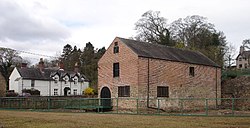Clwyd
Clwyd (pronounced Cloid) is one of the eight preserved counties of Wales.
| Clwyd | |
 Location of Clwyd in Wales | |
| Geography | |
| Status | Non-metropolitan county (1974–1996), Preserved county (1996–) |
| 2003 area | 2,910 km² Ranked 4th |
| HQ | Mold |
| History | |
| Created | 1974 |
| Abolished | 1996 |
| Succeeded by | Flintshire Wrexham Denbighshire Parts of Conwy |
| 2007 population | 491,100 Ranked 2nd |
| Politics | |
|---|---|
| Governance | Clwyd County Council |
It was created in 1974 and was named after the River Clwyd which flowed through it. In 1996, it was abolished and four new unitary authorities were created. These were Wrexham County Borough, Conwy County Borough, Denbighshire, and Flintshire. Clwyd became a preserved county.
It was in the north-east of Wales. To the north, it bordered the Irish Sea. To the north-east, it shared a maritime border with the English county of Merseyside, across the River Dee. To the east, it bordered Cheshire and bordered Shropshire to the south-east, both also in England. To the south, it bordered Powys and bordered Gwynedd to the west.
Clwyd's county town was Mold, which is today part of Flintshire. The county's largest town was Wrexham, which is today its own borough.
Clwyd Media
Denbigh in about 1775, from A tour in Wales by Thomas Pennant
The Pier at Rhyl, about 1900








